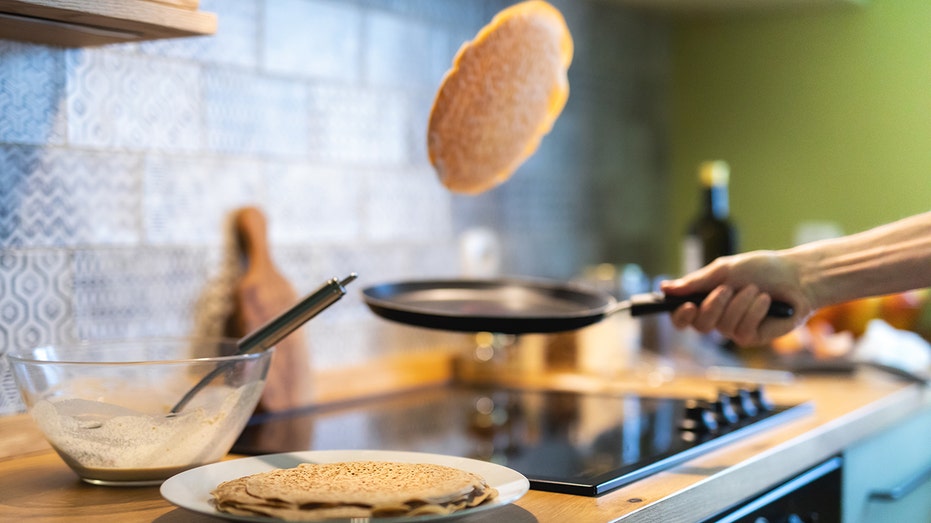
This article was submitted for fact-checking due to its focus on the sudden popularity of a “retro” pancake recipe, claims of cultural origin, and assertions about the dish’s history and budget-friendliness. With social media discussion fueling the trend, it’s important to verify whether these claims about “pancake soup” align with culinary history or if the story misrepresents the facts. Readers want to know: Is this really an old comfort food, does it truly have European roots, and is it as affordable and beloved as described?

Pancake soup, known as “flädlesuppe” in Germany and “frittatensuppe” in Austria, has origins in Central European cuisine. These thin, crepe-like pancakes sliced into strips and served in broth have been family staples for generations, particularly across Swabia and Austria. While the American tradition leans toward sweet pancakes, European versions are typically savory, reflecting a way to stretch ingredients and minimize waste. Recipes often get rediscovered online, with social media users fascinated by these cross-cultural food traditions, yet sometimes the context and history can be distorted as recipes go viral.

Claim #1: The pancake soup recipe, attributed to a 1975 community cookbook and a woman named Johanna Rhodes, is an unusual American dish recently resurfacing online.
The article says the recipe “calls for pancakes fried in bacon fat to be dunked into a savory broth” and describes it as an unusual find from a 1975 cookbook. This is accurate in context: a photo of the recipe has surfaced online, and it is attributed to Johanna Rhodes, according to Reddit users. However, the concept is not uniquely American or new—it closely mirrors longstanding European recipes for flädlesuppe, a dish many commenters recognize as German or Austrian. The article’s use of “unusual” describes its appearance in the American context, not Europe. While documentation traces the Reddit post and cookbook back to 1975, the dish itself is much older in culinary tradition.
Claim #2: Pancake soup (flädlesuppe or frittatensuppe) is a traditional German and Austrian dish, especially popular in Swabia.
The article states: “Pancake soup has roots in traditional German and Austrian cuisine, in which the strips are sometimes rolled up and served in beef broth with fresh herbs.” This claim is accurate. German and Austrian cookbooks, as well as food history sources, confirm that flädlesuppe is indeed a staple, especially in southern Germany and Austria. The dish involves thin rolled pancakes (crêpes) served in clear broth, often beef, and is commonly found in Swabian, Bavarian, and Austrian cooking. Source: Germanfoods.org, TasteAtlas, and academic works on Central European food traditions.

Claim #3: The recipe is praised as “budget-friendly,” with some comments calling it “a great way to feed a family on next to nothing.”
The article notes: “Great way to feed a family on next to nothing,” quoting discussion from Reddit. This is generally accurate when compared with staple soup dishes in European peasant cuisine, which were designed to minimize food waste and stretch limited resources. The main ingredients—flour, eggs, water or milk, and broth—are inexpensive basic staples in most kitchens. However, the inclusion of bacon fat and bouillon cubes or high-quality broth could slightly raise costs, but it remains a low-budget meal. Historical and culinary sources agree that flädlesuppe was valued for thriftiness and as a comfort food during challenging times.
Overall, the article offers a mostly accurate and balanced summary of the “pancake soup” recipe’s origins and cultural context. It correctly identifies the dish as a variant of a beloved German and Austrian staple, despite describing it as an unusual rediscovery in America. The historical background is supported by reputable culinary histories, and representations of the recipe’s affordability are in line with traditions of European peasant cooking. Social media responses are quoted fairly, showcasing both skepticism and enthusiasm. No significant misinformation or distortions are present. While the article plays up the novelty for an American audience, the facts about cultural roots, cooking methods, and thriftiness are well substantiated. Readers should feel confident that the core claims of the article are accurate and clearly contextualized.

